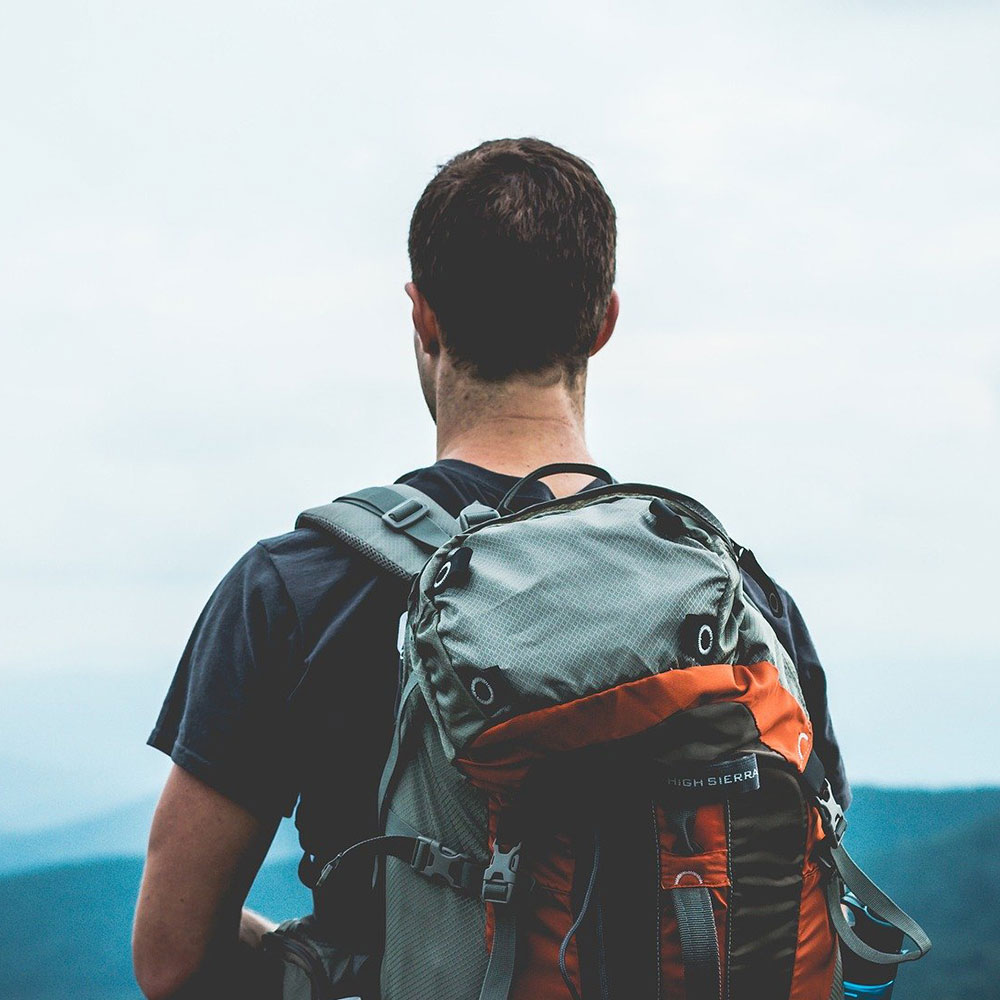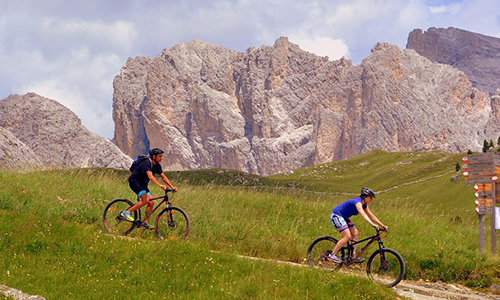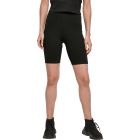Beginner’s Guide to Mountain Biking
Author

Javier Olivo is a blogger and a writer by heart. In the past, Javier worked as a woodcarver in a furniture store in his hometown. Being exposed to the outdoors, he often likes to give advice to people who prefer trekking in the woods. During his free time, Javier loves going to the gym and playing football.
Mountain biking is amongst the popular sport activities that people indulge in and I am also one of them. However, I have come across people who expressed their wishes to start mountain biking but haven’t been able to get around it.
So to help you all, I have compiled a beginner’s guide to mountain biking that covers all the basics of what, where, etc. to do in mountain biking.

What Kind of Bike to Buy?
Motorbike shops have bikes that range from £200 up to £2000 varying in size, shape, and style. As such, it is natural for you to get confused while purchasing one. So firstly, you should research and decide upon the kind of trail you want to cover. Secondly, fix a budget else, you will end up buying something that you won’t even need. Here are some types of bikes available:
Hardtail
This bike has a front suspension and a rigid rear end. A hardtail handles uphill climbs much better and if your primary intention is to wander and explore with occasional racing through the fast section of a single track, then this is the bike for you.
Full suspension
For a full-fledged thrilling experience in trial centres, mountains, etc., a full-suspension bike is the right choice. Full suspension bikes are usually more expensive than hairtails. They handle downhill riding efficiently and are great with big terrains and fast descents.
26er/ 29er
Getting the right wheel size is very much important. Before, all bikes used to have 26-inch wheels. But the introduction of the 29er gave fast top-end speed to riders and a smoother ride over rough terrain. You should choose the wheel size that best suits your preferences. If you get a demo at bike shops, do take the opportunity and test bikes of different wheel sizes to get a better understanding.
Where to Ride?
There are 15 National Parks, 46 AONBs, and over 14,000 miles of cycling trails on the National Cycle Network where you can ride your bike as a beginner. There are many trial centres where you can practice- like the Cannock Chase, Grizedale, etc. in England, Fort William, Dalbeattie in Scotland, etc.
Equipment to Be Carried
Helmet
You need a helmet to safeguard your head from any rocks, trees, etc. that can come on your way. It will help you keep your head safe should any mishap take place.
Shorts
Wearing a comfortable pair of shorts with built-in padding will only make the experience better.
Gloves
A pair of gloves should be used while riding as they give you extra grip, keeps your hands warm, and protects them from any scratches, etc. that you might get from branches, falls, etc.
Water Bottle
Staying hydrated is a must and hence, carrying a water bottle is essential. There is usually a bottle cage attached to the bike where you can store it. For longer rides however, I would suggest carrying a hydration pack.
Inner Tubes
Carrying spare inner tubes helps save your time if you get a puncture. You can just change the tubes and get to a repair shop later.
Pump
Carrying a pump is necessary because you never know when your bike might face a setback.
Apart from these, a first aid kit, a GPS, some emergency lights, and anything that looks important to you can be carried.

Trail Route Grading
Trails have different routes for different levels and abilities and they are colour-graded accordingly. Green trails are for beginners and families, blue trails come next and include some singletrack trails and steeper hills. Red trials are fast-flowing single-track routes and are for advanced bikers. Last are the black trails that have steep descents and large jumps and drop-offs. These trials should be traversed by skilled bikers only.
-
 Cotton Addict Womens High Waist Slim Fit Cycle Shorts£10.58 to £12.30RRP £31.74 Save Up To £21.16
Cotton Addict Womens High Waist Slim Fit Cycle Shorts£10.58 to £12.30RRP £31.74 Save Up To £21.16
Author

Javier Olivo is a blogger and a writer by heart. In the past, Javier worked as a woodcarver in a furniture store in his hometown. Being exposed to the outdoors, he often likes to give advice to people who prefer trekking in the woods. During his free time, Javier loves going to the gym and playing football.
Categories
- Sport (28)
- Product Reviews (3)
- Team Outdoor Look (7)
- Mike Wild (2)
- Mike Payton (2)
- Suse Hammond-Pears (3)
- Snowboarding (12)
- Latest Offers (105)
- Shop Talk (1)
- Competitions (7)
- Walking (413)
- Lifestyle Fashion (8)
- Travel (86)
- Kit Guides (176)
- Workwear Clothing (6)
- Safety Workwear (4)
- Health/Fitness (289)
- Skiing (91)
- Great Outdoors (1316)
- Cycling (92)
- January 2025
- December 2024
- November 2024
- October 2024
- September 2024
- August 2024
- July 2024
- June 2024
- May 2024
- April 2024
- March 2024
- February 2024
- January 2024
- December 2023
- November 2023
- October 2023
- September 2023
- August 2023
- July 2023
- June 2023
- May 2023
- April 2023
- March 2023
- February 2023
- January 2023
- December 2022
- November 2022
- October 2022
- September 2022
- August 2022
- July 2022
- June 2022
- May 2022
- April 2022
- March 2022
- February 2022
- January 2022
- December 2021
- November 2021
- October 2021
- September 2021
- August 2021
- July 2021
- June 2021
- May 2021
- April 2021
- March 2021
- February 2021
- January 2021
- December 2020
- November 2020
- October 2020
- September 2020
- August 2020
- July 2020
- June 2020
- May 2020
- April 2020
- March 2020
- February 2020
- January 2020
- December 2019
- November 2019
- October 2019
- September 2019
- August 2019
- July 2019
- June 2019
- May 2019
- April 2019
- March 2019
- February 2019
- January 2019
- December 2018
- November 2018
- October 2018
- September 2018
- August 2018
- July 2018
- June 2018
- May 2018
- April 2018
- March 2018
- February 2018
- January 2018
- December 2017
- November 2017
- October 2017
- September 2017
- August 2017
- July 2017
- June 2017
- May 2017
- April 2017
- March 2017
- February 2017
- January 2017
- December 2016
- November 2016
- October 2016
- September 2016
- August 2016
- July 2016
- June 2016
- May 2016
- April 2016
- March 2016
- February 2016
- January 2016
- December 2015
- November 2015
- October 2015
- September 2015
- August 2015
- July 2015
- June 2015
- May 2015
- April 2015
- March 2015
- February 2015
- January 2015
- December 2014
- November 2014
- October 2014
- September 2014
- August 2014
- July 2014
- June 2014
- May 2014
- April 2014
- March 2014
- February 2014
- January 2014
- December 2013
- November 2013
- October 2013
- September 2013
- August 2013
- July 2013
- June 2013
- May 2013
- April 2013
- March 2013
- February 2013
- January 2013
- December 2012
- November 2012
- October 2012
- September 2012
- August 2012
- July 2012
- June 2012
- May 2012
- April 2012
- March 2012
- February 2012
- January 2012
- December 2011
- November 2011
- October 2011
- September 2011
- August 2011
- May 2010
- April 2010
- March 2010
- February 2010
- January 2010
- November 2009
- October 2009
- September 2009


Submit a Comment